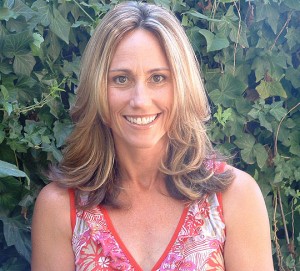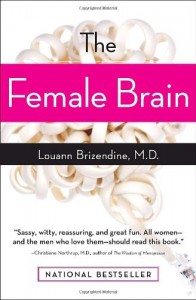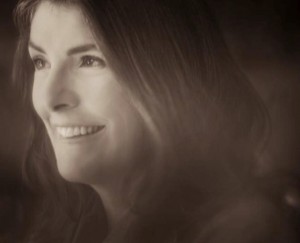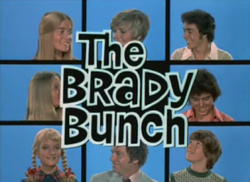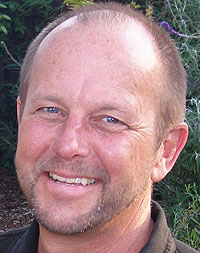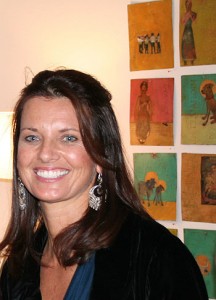
Artist Erika Carter (courtesy photo)
Downtown Santa Barbara’s 1st Thursday events have grown into a popular hive of art, music and wine, and few spots are buzzier than Erika Carter’s Studio 3 East gallery, (http://www.erikacarter.com/) located at 3 East De La Guerra Street above Starbuck’s. Here Carter, a Santa Barbara native, talks with Leslie Dinaberg about living an artful life.
Leslie Dinaberg: What are you working on now?
Erika Carter: It’s a holiday show. It will be the third annual show for Donna Asycough and myself … this one is “Arbol de Vida” which is the “Tree of Life.” … The paintings I do are all retablos; those are the little tin devotional paintings, folk art. …This year I’ll be doing 100 of them.
LD: Wow.
EC: Yeah, I know. It’s a lot of work. Donna and I are both just very passionate about Mexico. We can’t get enough of it.
LD: How do you psych up to do 100 paintings?
EC: It’s insane. I get all the tins out; I prep them all at the same time. Most of them are collage transfers, so I take photographs, transfer them, and do some things. … This is all collage, this is all photo transfer, and then I paint on it too as well, so it’s a mixture. I’ll go and I’ll photograph like crazy and then I’ll come back and start looking at my images, start laying them out and then I get to a point where they all get started. They’ll all be to a point where there will be 100 of them sitting there and I’ll start cranking and it will be 10 hour days.
LD: And do you primarily paint here in the studio?
EC: This is it, so it will be a mess in November. It’s very sad for the artist (Melissa Gill) showing here in November.
LD: There’s something kind of cool about that because most gallery space isn’t studio space.
EC: No. This was originally a studio space, that’s all it was, and for me to survive and have a studio space which of course wasn’t as big as it is now, was to start doing shows to help pay the rent, which has been really great. I would do a show, have a few friends, and hang some artwork for the weekend. Then people started hearing about the gallery space and it grew and now I’m booked through 2009.
LD: Wow. That’s awesome.
EC: Well it’s awesome and it’s not awesome because it’s a lot of responsibility for the next year. It’s a little scary because of economic times. … We break even; no one is getting rich up here, it just pays for itself. When I have my shows I make money. I’m lucky because my stuff sells, but that’s when I make money because I keep my 50 percent. So I try to do two to three shows a year and that kind of pays me, then the rest of the year the shows that we have up pay for the space, and sometimes it does pay more.
LD: Do you also do events? It’s such a cool space.
EC: Yes, we’ve done lots of private birthday parties here and stuff like that, so that’s great. On 1st Thursdays we have a liquor license too, so we sell lots of wine–that helps.
LD: So have 1st Thursdays helped your business?
EC: Yes. I think it’s great exposure. It’s definitely daunting at times because you know how fast three weeks goes by. I’ve got to take down a show, put up a show, it’s really hectic. It gets really crazy. And I just signed up for another year of it.
LD: So you’re obligated to be open.
EC: Yes. We’re open Tuesday through Saturday 12 to 5 and obligated just to the artists that have shows here. They’re all painting right now for their upcoming shows. It’s kind of a scary time. It’s like wow, I hope we sell something.
LD: Maybe people should stop investing in the stock market and buy art.
EC: Well it’s funny; I was just talking to somebody about that. … It is where people should invest. I mean it’s a good investment compared to the stock market.
LD: The pieces are one of a kind.
EC: Yeah, exactly. It exists, it is what it is, and it usually almost always holds its value. And you’re enhancing your living space, or your attic. Whatever.
… (Running the gallery) it’s been great, what I’ve learned is invaluable. Every aspect, working with groups of artists, getting to know all of the artists in Santa Barbara, being part of that. That’s a hard thing to break into.
LD: But you’ve been an artist in Santa Barbara for a really long time.
EC: I have. But it’s really easy for me to just close my doors and sit in front of my canvas and not talk to anybody for weeks. Even though I’ve been painting here forever and ever, it’s very easy to get locked into your own little world and talk to maybe two artists. You know of all the other artists but you’re not really communicating. It’s much different when you actually have created a space and now you can actually show their work. They just come to you and it’s been great. I mean the art I’ve seen and the people, it’s all been really great.
LD: Prior to this did you have a studio somewhere else?
EC: No. I’ve been here almost 20 years. … When I moved in here this was lower State Street. Paseo Nuevo did not exist. When I moved in here everything was shut down around us, everything was boarded up, my rent was $250 and it was that little teeny room over there. … Nicole Strasburg (http://www.nicolestrasburg.com/ ) was in the unit over there and Liz Brady (http://www.lizbradyart.com/ ) was here too, she had my little space and some tattoo artist had been there. When I moved in the room was tattooed, the ceilings and beer cans, it was so hideous.
LD: It’s totally cool now and has a very different feel from most galleries.
EC: That was kind of the point too. I don’t like walking into galleries. I never have. I’ve always felt that they’re too reserved; it’s just a little too snooty or elitist. I don’t have that problem now, but when I was much younger I just felt really intimidated. For a long time I just used to show in coffee shops, which is still great. I still encourage people to do that. Just hang your art wherever you can in this town.
LD: Have you always wanted to be an artist?
EC: No. Isn’t that funny. I never thought I was talented enough to be an artist. I don’t even really call myself that now. It’s kind of a stretch. It’s not a stretch because that’s what people need to title you something, but it’s definitely something you’re always trying to achieve. You’re hopefully always getting better and getting more secure with your work. Some paintings you make and you’re like wow, I did that. I can’t believe I did that it’s amazing and then other stuff you can spend two weeks on something and go holy sh*t I can’t paint. What was I thinking?
Vital Stats: Erika Carter
Born: Santa Barbara (St. Francis Hospital) on October 25, 1962.
Family: Husband Dr. David Dart; son Carter, age 20; five adult stepchildren and their six children.
Civic Involvement: ” I look at it as my civic duty is that I am showing local artists and allowing them to either start their careers or continue them.”
Professional Accomplishments: Artist, owner of Studio 3 East gallery.
Little-Known Fact: “I’m not high energy at all (laughs). A lot of people think that I am. They think that I’ve just got tons of energy and I’m not. I fight for my energy, definitely. I love a good nap in the middle of the day.”
Originally published in Noozhawk in October 2008. Click here to read the story on that site.
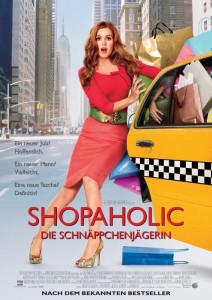 It’s hard to believe when you look at my closet today, but I am actually a recovering Shopaholic. Hanging out at the mall was once my favorite way to spend an afternoon. Forget the fact that my retail therapy addiction resulted in a ridiculous amount of credit card debit–those banana clips, big belts, and acid washed jeans at Limited Express were just too cute to resist–I am probably personally responsible for the recent stock market dive since I gave up shopping as a hobby just about the same time that subprime mortgages came into vogue.
It’s hard to believe when you look at my closet today, but I am actually a recovering Shopaholic. Hanging out at the mall was once my favorite way to spend an afternoon. Forget the fact that my retail therapy addiction resulted in a ridiculous amount of credit card debit–those banana clips, big belts, and acid washed jeans at Limited Express were just too cute to resist–I am probably personally responsible for the recent stock market dive since I gave up shopping as a hobby just about the same time that subprime mortgages came into vogue.


